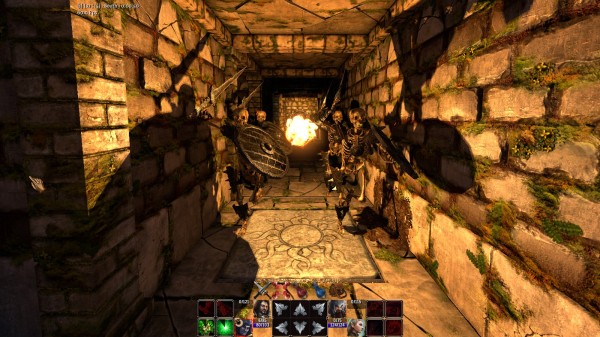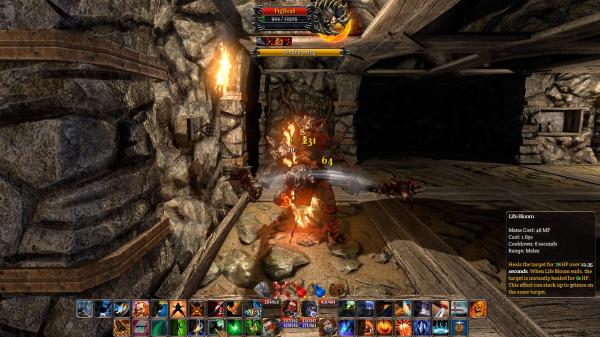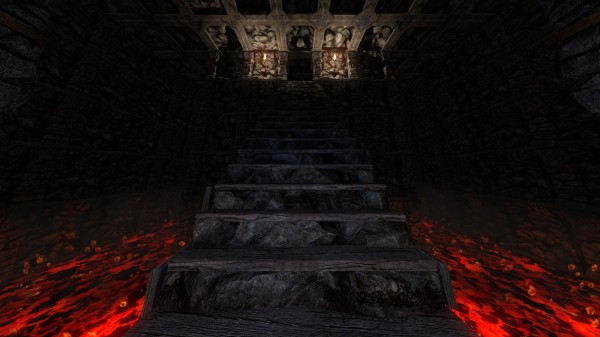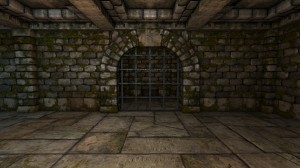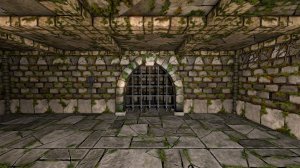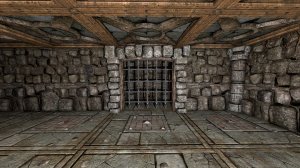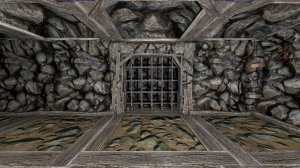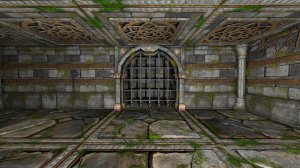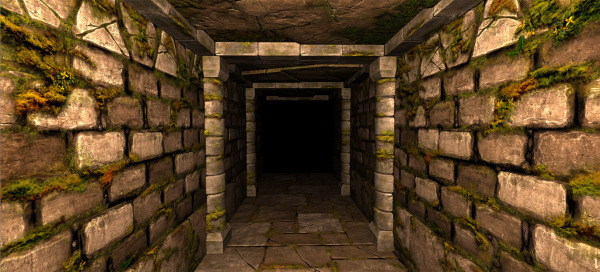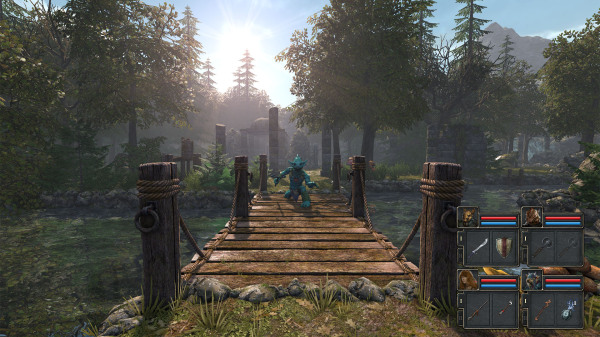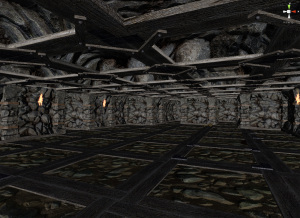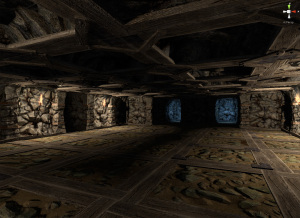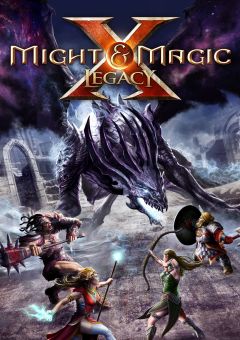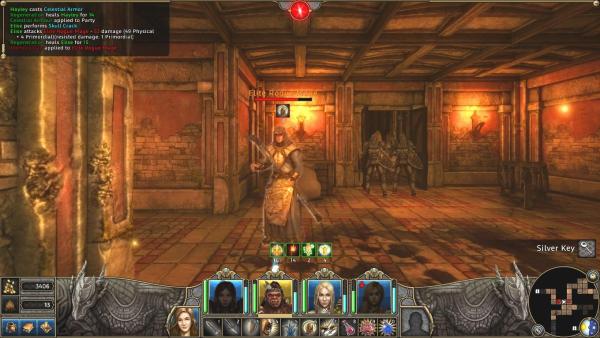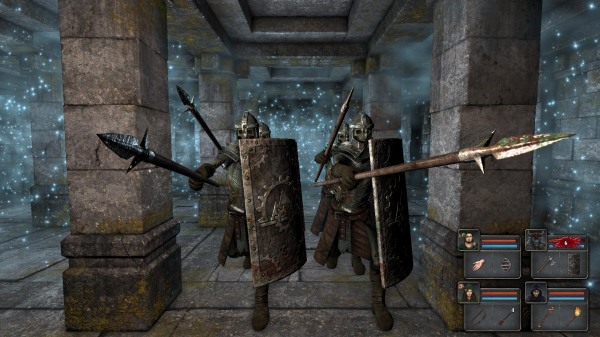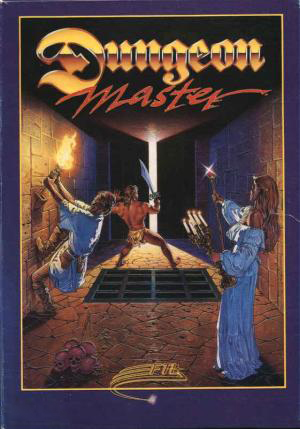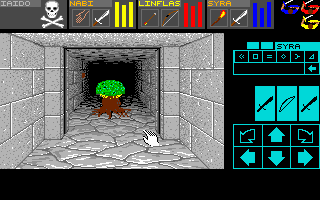We’ll cut it into 2 parts : 1 for the development, 1 for the marketing & long-term support.
Development
What went right ?
Choosing Unity
Although it’s obvious afterward, it wasn’t years back, around 2010, when I decided to give it a try. I can’t see how I could have done the game without using the Unity engine. It has some serious & annoying flaws, but all in all, it has been great to work with, and a huge time saver. I already wrote a complete post about the issues I got with it here .
Use of stock assets
All enemies in DG are from stock assets. Before to do that, I had big doubt about the visual unity of the result : many different styles, would it look silly or even super bad ?
Actually, it didn’t ! Once everything was together inside the same environment with the same lighting, it got a lot smoother and 95% of the enemies looked great. The only real little miss is the 1st boss because he’s too low on poly and his texture is of low quality. Also, although no user complaining about his quality, a few wondered about his style (he’s a bit of a Japanese samurai), but it was more of a background story issue, as they hadn’t read the in-game dialogues. Another little downside is that I die a little bit every time I see another game using the same stock models… ![]()
Use of stock icons was also a good choice, as it’s very expensive to produce original ones, although it has been a challenge to find the correct one for each of the abilities & talents.
Motivation
I have been able to keep a high morale for most of the development. I didn’t work too much every day, but my best & most productive hours almost always went into the game. At end of development, I also worked 6 days per week on DG. However, I have been careful to keep 1 rest day per week to avoid any burning out. It’d have been better if I didn’t have to take care of my customer services for my other games on that day, but they funded DG, so I had to do it… ![]()
Level Design
Although I had never professionally designed levels, the result is very good (a good bunch of players has praised it). However, I had designed for fun many Doom levels and a few ones for Quake 3, in my younger years.
The whole thing could have used a better planning, though. I created level 1 by 1, without thinking much about what was coming next, especially in the 2nd part of the game, and thus it lacks a bit of unity and global goal (which is bad story-wise & motivation-wise for the player).
What went wrong ?
Out of Steam, hurry to release
Despite my relatively good handling of my motivation, I ended the development very tired (partly because I had a lot of sleep issues from a noisy environment), and I couldn’t release the game with all the features I wished. Fortunately, I fixed that in the following couple of months.
Also, I spent a good part of the development to lie to myself about the time required to finish the game, in a totally unconscious way. It’s relatively funny to think about it afterward, especially if you know I’m usually pretty good at estimating the time required to do things. For example, in November 2014, I thought I’d have finished the game by February 2015, 3 months later. The game was actually released in November 2015, 12 months of hard & intense work later..!
To achieve that, I completely ignored the time required to do certain tasks (ie: asset integration) despite the fact I already known it was taking much more time than I initially thought : as it was the 1st time I did that, I badly underestimated the huge amount of grunt work it is to get assets (either stock assets or produced ones) ready for the game. I also didn’t put in my planning other tasks that were required to complete the game.
Looking back, I did the right thing : I think I couldn’t have stomached being 1 year from release in November 2014.
On another hand, from 1 year before release, I started to work with mostly the release in mind, instead of taking pleasure in what I was doing at the moment. I was always focusing on finishing what I was on, and wanting to switch to the next task and so on. It helped to release the game in a decent state, but it’d have likely been better to downscale a bit the project at the start, especially when we see the following issue.
Lack of Polishing
The game lacked polishing, especially on game release. After 2 years of tuning, bug fixing and improvements from user feedback, it is pretty neat, but still, now visually it feels instantly less polished than the best Indie titles, especially for the GUI. There, there’s no miracle : I worked mostly alone on a big game with a tiny budget for the freelancers. I’m afraid there was no way to do better without putting more work or money than I could have.
Story
I don’t think DG was ever destined to get a great story, but things even got worst with the release of Legend of Grimrock 2. They did more or less what I originally thought to do for DG : the dungeon master was there to test your skills so you could take his place.
At that time that part of the story was still not in the game, so I changed the end, and it got kinda darker, but more open to a sequel. I also tuned down the ambition for the 2nd part of the game, especially when I realized it was long & costly to build a story into the game (ie: something that’s more than a few notes here & there).
Lack of Beta Testers
With the Indie apocalypse, now there are more games in development than available Beta testers (without counting the hundreds of thousands of games on mobile!), and it’s a real challenge to find some players to intensively test a game and give some useful feedback, especially with no previously released game in the same genre.
I got about 10 people answering my call posted in several dungeon crawler forums, but only 1 really got into the game and gave a lot of very useful feedback. 1 is infinitely better than 0, but it was not enough to represent the tastes of the dungeon crawler fans, and I missed out a few things that could have been fixed during the development. I got most of them in a couple of weeks after release on Steam, but it has been quite stressful.
Lack of impact
So in the nowadays flooded market, the game is too long to get into, as the rules are pretty special (which is also a strength). It’s also too repetitive, especially in the 1st four levels : they are full of skeletons with few other types of enemies, and the environment doesn’t change before the 5th level.
Also, there are no real strong moments to capture the player attention and curiosity once the intro is done.
Moreover, the 1st level was done for the alpha version of the game, to show what the game could do, and then was used for the final version almost without any thoughtful reworking.
So all in all, the game fails to impress some players during the 1st couple of hours. The positive is that the players who stick with the game are rewarded as the game gets better, but many players gave up after a couple of levels so it didn’t help the word of mouth.
Too Long
Initially, I wanted the game to offer about 20 hours of gameplay. I calculated it should take about 1 hour to complete 1 level, so I decided to create 20 levels.
But due to the numerous enemies and the active-pause based combat, for a lot of players, it takes around 2 hours to complete a level. This makes Dungeon Guardians one of the longest dungeon crawlers to beat, and for the average player, it’s clearly too much, as only 3% of the buyers finished the game.
Game value would have likely benefited to have only 15 levels and the saved time could have put to polish the game more before release and build a more captivating story.
However, in my heart, I’m happy the game is that long as it offers a good variety in the level design all along. So for the sequel, I’m thinking to keep the same length, but build the whole world in a more engaging way, with even more different sections to explore, and with a better story to motivate the players to go through the whole adventure.
Unbalance
To complete the Level 1 after its Alpha stage, I added an extra zone to it, before the final boss, and made it optional with its entrance being not obvious. The result is that some players never did that zone and thus didn’t get the required experience to level up before that Boss and the next ones in the following levels..! Thus, some of these players ended thinking the game was unbalanced, as the Boss fights were harder than normal.
With the game rules being hard to apprehend, this leads to a series of negative reviews on Steam.
For the sequel, I’ll give an XP bonus at the start of the 1st Level, so the party members will level around the middle of the level instead of near the end, which will allow having a few optional zones without unbalancing too much the Boss fights.
Legend of Grimrock resemblance
DG 1st environment, the mossy stones, looks a lot like the one from LoG1 on 1st sight (when checking more carefully, they are obviously different, though).
This brought some heat (even hatred?) from some players on game release.
We often say “there’s no bad advertising”, and other dungeon crawlers are very often compared to LoG anyway, so I’m not sure it was a bad thing.
Overall, I’d say the result is 50% positive/50% negative on the players trying the game because it looks like LoG, as some didn’t like it and others said it was just like LoG ; this shows that some players are very strict on what is LoG and some other are more open to the dungeon crawler genre.
Lack of puzzles
On initial release, the 1st true puzzle was on Level 5. There was also a dexterity puzzle on Level 4 that didn’t require much thinking. And some very very simple puzzles on the way.
This was not enough for many fans of the genre who like the grid-based dungeon crawlers for their puzzles. I fixed that after release by adding 1 puzzle in the Level 2 and 1 in the Level 3, which gave a better balance.
It’s still far from being enough for pure puzzle fans, but they are not in the target, as I’m targeting exactly the opposite gamers : the ones who don’t like puzzles much, but don’t mind a break from the combat from time to time… ![]()
Too complex level
The 2nd level is one of the hardest levels as it’s a maze on 2 floors. I wanted to show the verticality that offers DG, which is unique in the genre (other DCs have usually only flat levels), but it was a bit too complex for the average gamer. It’d have been better to introduce more gently the challenges brought by the verticality by tuning down a bit the maze aspect.
Marketing & Support
What went right ?
Decent Reception
Despite the game offering an unexpected combat system, most players liked it or at least were not too annoyed by it, which lead the game to get a decent 85% positive ratings on Steam.
However 85% is not great as the median score on Steam is 81%, and the game got only 301 reviews at the time of writing.
Overall, as of today, Dungeon Guardians is the 1st-person grid-based dungeon crawler that sold the most units on Steam since Legend of Grimrock 2. (source: Steamspy)
Ok, that sounds cocky, but actually, it’s a not much of a feat, even if it’s better than nothing..! ![]()
1st, Starcrawlers likely grossed more than DG, which means either I discounted DG too much, too early, or that DG didn’t attract the players strongly enough and couldn’t sell decently at its price point.
2nd, LoG2 sold about 8 times more units than DG (it’s hard to count exactly now as they did some bundles), which is a huuuuuuge gap.
3rd, this micro-niche genre got less than 10 games after LoG2.
4th, Vaporum seems to be on its way to beat DG within 1 year, as after a weak start (a bit under DG start), it got strong sales during the Winter sales.
Money!
I made enough money to pay me a decent salary for all my work on the game.
In today Indie apocalypse, it is quite a feat. To go on with the comparison with the other games mentioned above, they either got several developers on them and thus are less profitable, or a single developer and sold a lot fewer units and thus are also not much profitable (even if some got shorter development time than DG).
So it’s good but not great, because total income is not enough to fund a more ambitious sequel. But it’s enough to fund one similar to DG1, with a big chance to lose money, though, as my guess is that selling an Indie game will just get harder and harder with the time, due to market over-saturation.
Updates with impact
I did a good bunch of updates after release of the game, for almost 2 years, not full time ( obviously ![]() ), but it likely took me the equivalent of about 3 months full time of additional work, till the point I could add “Enhanced Edition” to the title of the game, and got better reviews and more happy players (score average on Steam since 1 year is above 90%).
), but it likely took me the equivalent of about 3 months full time of additional work, till the point I could add “Enhanced Edition” to the title of the game, and got better reviews and more happy players (score average on Steam since 1 year is above 90%).
Most updates have been done from user feedback and it has been very nice to see the players enjoying them. The game feels more complete and polished now and as a game author it’s a fulfilling objective..! ![]()
What went wrong ?
Missed a good part of the target
DG is a mix between a tactical combat game and a dungeon crawler, inspired from WoW. At 1st, mostly only dungeon crawler fans bought it. Few WoW fans bought it and even less tactical fans..!
I partially corrected that about 1 year ago by changing the game tags & short description, so it made it clearer it was strategy oriented, with decent results.
However, the game never got any attention from the mass of WoW fans (no news, no forum posts on WoW forum, etc.), although a few WoW fans bought and enjoyed the game.
At this point, I’m really not sure how it could have been better without having a much bigger budget, both for the game production value and the marketing.
Too much hasted negative reviews
This one is really painful. As already explained in this blog, a lot of players gave hasted negative reviews, for various reasons, and it took a toll on my mood and my energy to try to explain the game rules, the options, etc, and sometimes show them that if they had read the game description, they just shouldn’t have bought the game.
All in all, without that work, the game would have been nearly down to 75% positive ratings instead of 85%. So it was important to do it, but I really don’t enjoy that. With some players, it’s ok as they are happy to get the support and the explanations, and pleasantly surprised to meet a developer eager to help the players ; but with some other ones, who are full of negativity or just don’t care about trashing a game, it can get really unnerving.
However, even if in the past I was sure it was extremely important to keep a high total score, I’m not sure it’s totally the case today. The Steam global score is nowadays mostly a bad joke for many reasons (that are out of the scope of this Post Mortem ![]() ), and it’s possible that more and more users realize it. As a whole, for the game industry, and especially Indies, it’s a bad news as the global score used to be an efficient way to promote a game without a marketing budget.
), and it’s possible that more and more users realize it. As a whole, for the game industry, and especially Indies, it’s a bad news as the global score used to be an efficient way to promote a game without a marketing budget.
One last important thing is that as the game is too long with a low completion rate, it’s missing a lot of positive reviews to compensate the negative reviews : there’s a lot of players who usually review the games only once they have beaten them, and thus as they never finish DG, they never review it.
Conclusion
We can say that Dungeon Guardians is a decent success, but far from a huge one.
Its development had issues but nothing nightmarish.
The gameplay is good but could use more variety. For my 1st RPG, I couldn’t pretend to much more… ![]()
It was nonetheless a great and fulfilling adventure for me and my only hope is to be able to do a sequel offering an even better gameplay, if not a significantly higher production value..! ![]()
Except in case of a big surprising event about the game, this is my last post on this blog till DG2 development starts within next couple of years (if it ever starts), so thanks for reading it and farewell ; may you explore many huge dungeons, 1 cell at a time ! ![]()
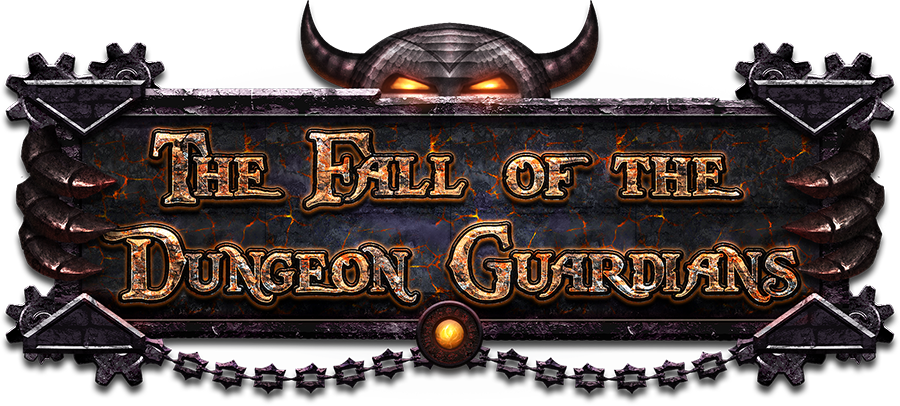
![PostMortem [Screenshot by Hexaae]](https://www.managames.com/DungeonGuardians/wp-content/uploads/2017/08/2017-08-PostMortem-by-Hexaae-1920x1080.jpg)
